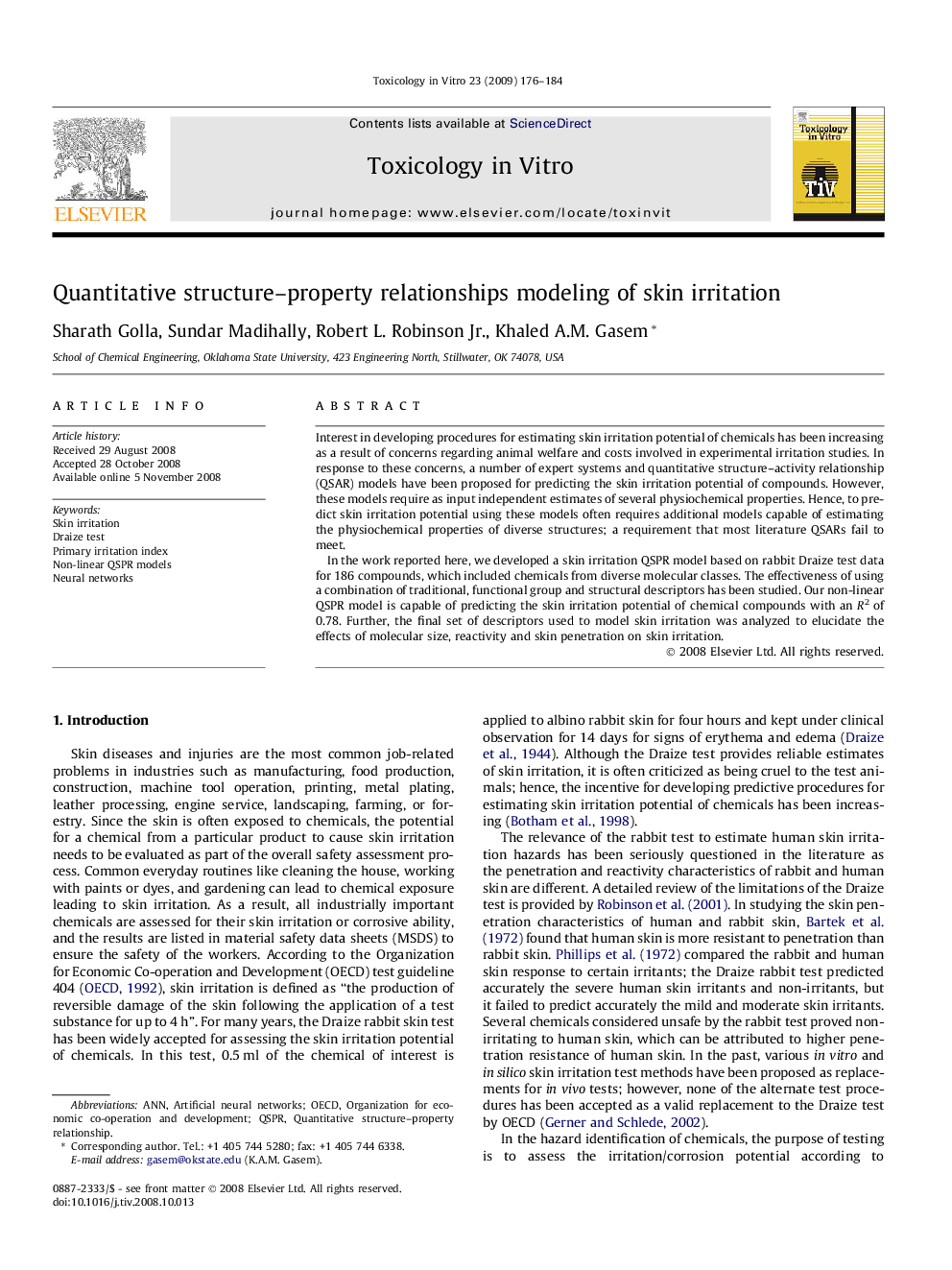| Article ID | Journal | Published Year | Pages | File Type |
|---|---|---|---|---|
| 2603283 | Toxicology in Vitro | 2009 | 9 Pages |
Interest in developing procedures for estimating skin irritation potential of chemicals has been increasing as a result of concerns regarding animal welfare and costs involved in experimental irritation studies. In response to these concerns, a number of expert systems and quantitative structure–activity relationship (QSAR) models have been proposed for predicting the skin irritation potential of compounds. However, these models require as input independent estimates of several physiochemical properties. Hence, to predict skin irritation potential using these models often requires additional models capable of estimating the physiochemical properties of diverse structures; a requirement that most literature QSARs fail to meet.In the work reported here, we developed a skin irritation QSPR model based on rabbit Draize test data for 186 compounds, which included chemicals from diverse molecular classes. The effectiveness of using a combination of traditional, functional group and structural descriptors has been studied. Our non-linear QSPR model is capable of predicting the skin irritation potential of chemical compounds with an R2 of 0.78. Further, the final set of descriptors used to model skin irritation was analyzed to elucidate the effects of molecular size, reactivity and skin penetration on skin irritation.
